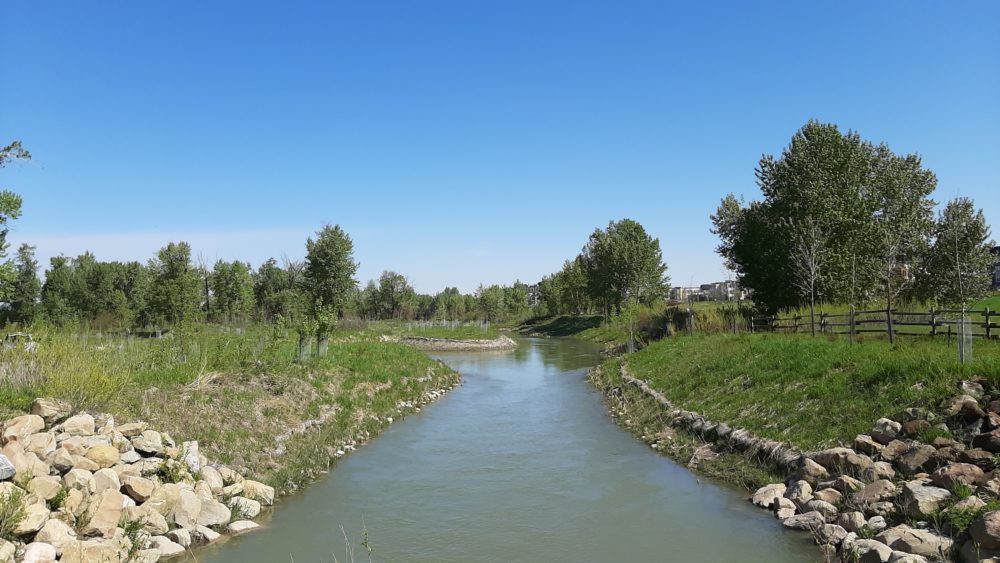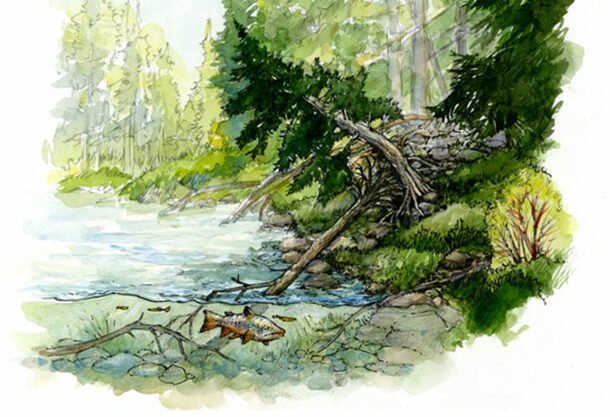The City of Calgary Fish Habitat Compensation Program (FHCP) is unique in so far as the sites selected for the fish compensation initiative are spread across the entire City of Calgary Bow River and the Elbow River watersheds. In addition, the sites are located above and below the Western Irrigation District Weir–Harvie Passage (HP) and the Bonnybrook Wastewater Treatment Plant (BWTP) which have historically had an impact on fish movement and aquatic food sources, respectively.
- The Quarry Park Side Channel Project is located below both HP and BWTP and is representative of a more abundant fish population that the Bow River is renowned for.
- Bowmont West Side Channel Project is located above the BWTP and HP. The site is located close to the Bearspaw Reservoir outflow and is subject to water management discharge practices close to the reservoir’s outflow.
- The Elbow Island Gravel Bar Enhancement Project is above both BWTP and HP and is located in a city-managed river flow source and primary brown trout spawning area.

Quarry Park Fish Habitat Enhancement Channel
Historically the Western Irrigation District Weir presented a barrier to the free movement of fish across the City reach of the Bow River, but the development of the Harvie Passage Low Water Channel that was opened in 2011 and upgraded in 2018 eliminated this restraint. Over the past 20 years, BWTP practices have improved whereby less phosphate and other residues are discharged into the river. Both these improvements have an impact on the fish population dynamics now and into the future.
Brown Trout, Rainbow Trout, and to a lesser degree Mountain Whitefish are the principal sport fishing targets in the Bow River. The City reach of the Bow River and the Elbow River are considered prime fall spawning sites for brown trout. But little is known of the rainbow trout spawning activity in the spring. The FHCP offers valuable insight into the fish population dynamics within the City of Calgary. It also demonstrates that the hard armament of vulnerable riverbanks under flood conditions can be compensated by back-channel enhancement initiatives and long-term site maintenance.
The Review is limited to fish and habitat dynamics. An expanded review of the references in this document will allow for further investigation by those individuals who wish to broaden their knowledge base. The discussion within the publication gives direction that should be considered in the interpretation of fish population dynamics and what research is needed to fill in the gaps.
